After such a long passage from Jersey to A Coruna, we wanted to take our time exploring NW Spain. This area is Galicia and is renowned for its beautiful rias (flooded valleys).
The forecast showed light winds, so, not wanting to motor, we returned to Ensenada de Mera for two nights. This gave us chance to catch up on some paperwork and boat jobs. We also managed to test out our dive compressor and new dive gear. Happy it was all working, we followed the anchor chain down 8m to the sandy bottom. Nothing really to see apart from the fuel cables for the dinghy. These had gone overboard the day before, along with Martin, when he flipped the dinghy. Sorry no pictures!!
The forecast for light winds continued, but, keen to move on, we decided to set off anyway, splitting the journey to Cape Finisterre into two days.
The winds were light – Force 2 (4-6 knots). Luckily, they were north easterly, coming from the side and we still managed to sail, albeit slowly. It was an uneventful day, spent peacefully sailing along at 2 to 3 knots, watching the rugged coastline roll by.
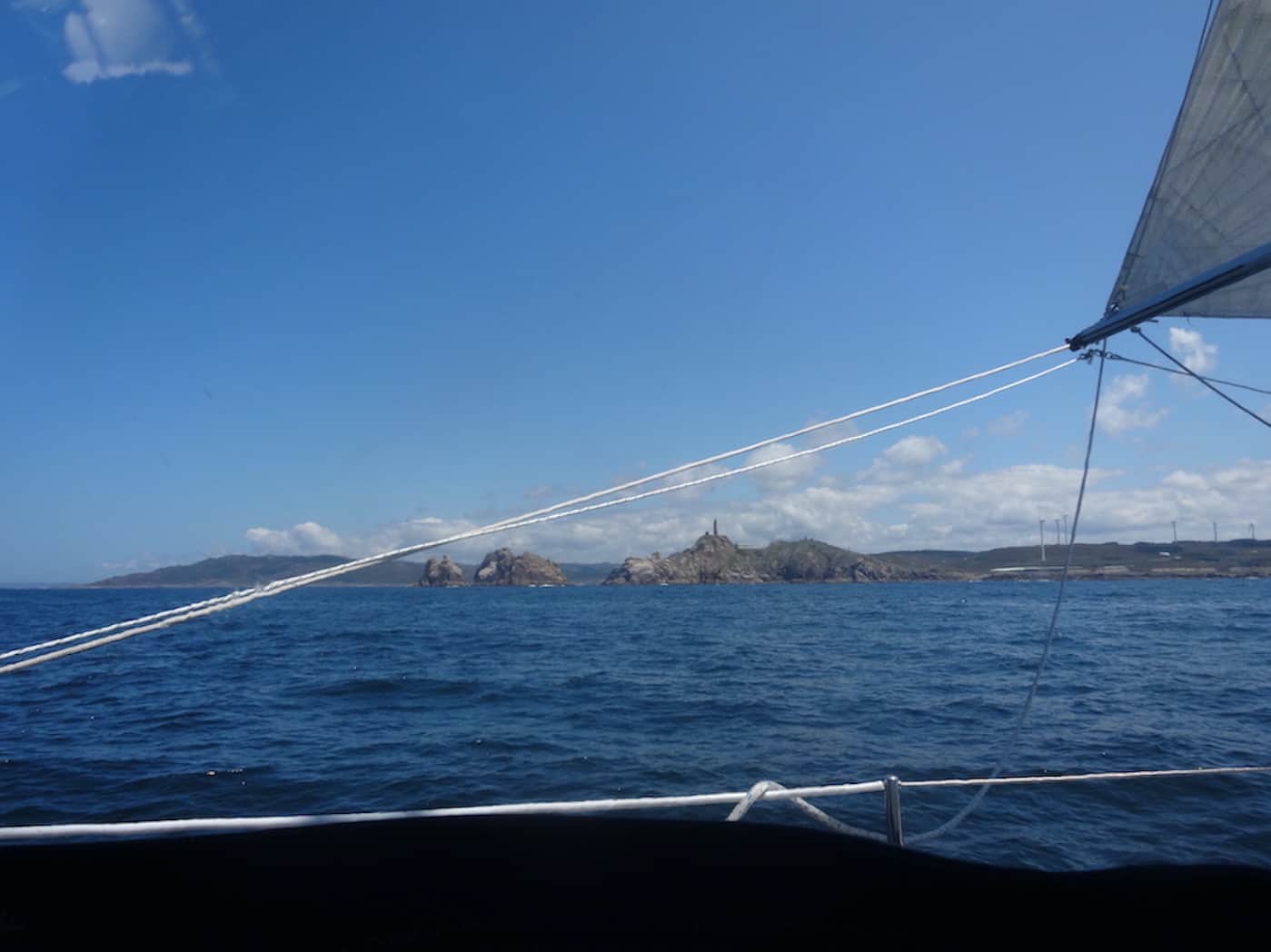
Our stop for the first night was Islas Sisargas. These are a group of three uninhabited islands around half way between A Coruna and Cape Finisterre. When we arrived, we were disappointed to see another boat in the small bay. Selfishly, we had been hoping to have the anchorage all to ourselves.
Wanting to explore the main island, we took the dinghy ashore and walked up to the lighthouse, taking in the amazing views up and down the coast at every turn of the path (see the feature photo on the blog page).
Whilst they are not inhabited by humans, the islands are home to thousands of gulls and their young. The adult gulls are very protective of the young, so much so that the pilot guide recommends protective head gear if you visit during the hatching season. Luckily for us, this period had passed. The young gulls were old enough to begin to fend for themselves and the air was full of novice fliers.
The islands have not always been uninhabited and we discovered several derelict buildings. Checking on Google later, we think that one of them was a church. Unfortunately, it is currently all bricked up. However, peering through the gaps, we could see a strange assortment of equipment. Google let us down and we couldn’t find out what it was!
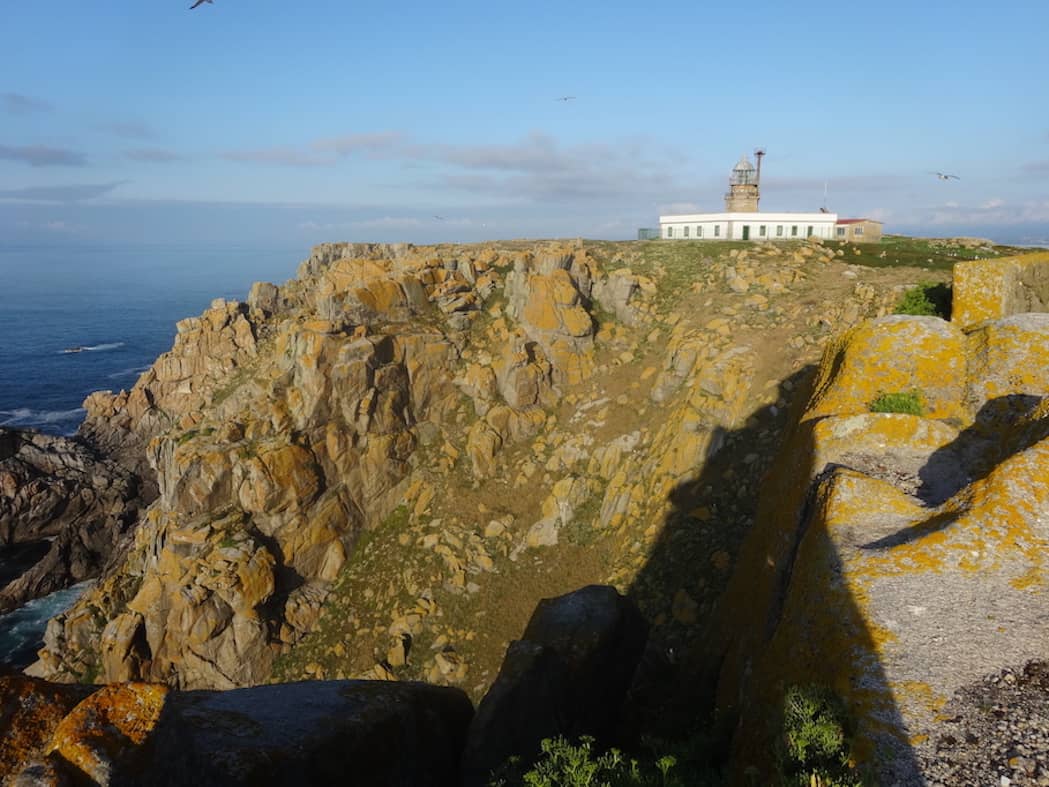
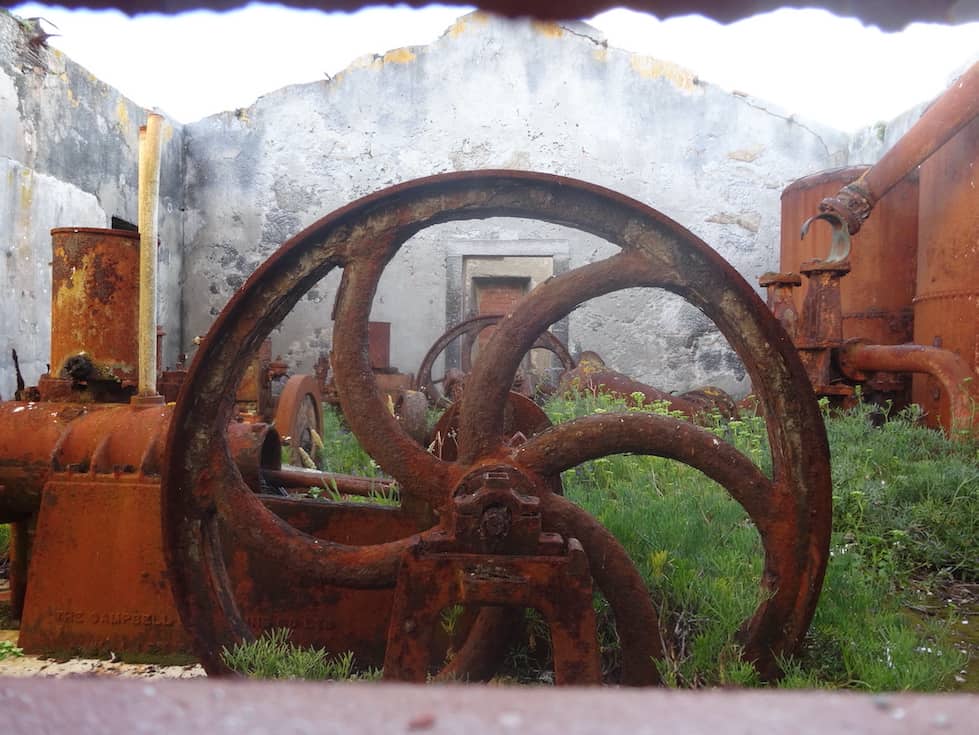
The anchorage was not as idyllic as hoped and the swell coming in between the islands made it VERY rolly all night. Not much sleep was had by either of us and early, but not so bright, we set off along the coast again.
Weather conditions were similar to the previous day. The only difference being that the Force 2 wind was now coming from directly behind us. This meant that we set up the Genoa and main ‘goosewinged’ – they were held out, one on each side of the boat to make the most of the little wind there was.
It was a slow and steady sail westward and, eventually, we reached our anchorage for the night in the Ria de Camarinas, just off the village of the same name.
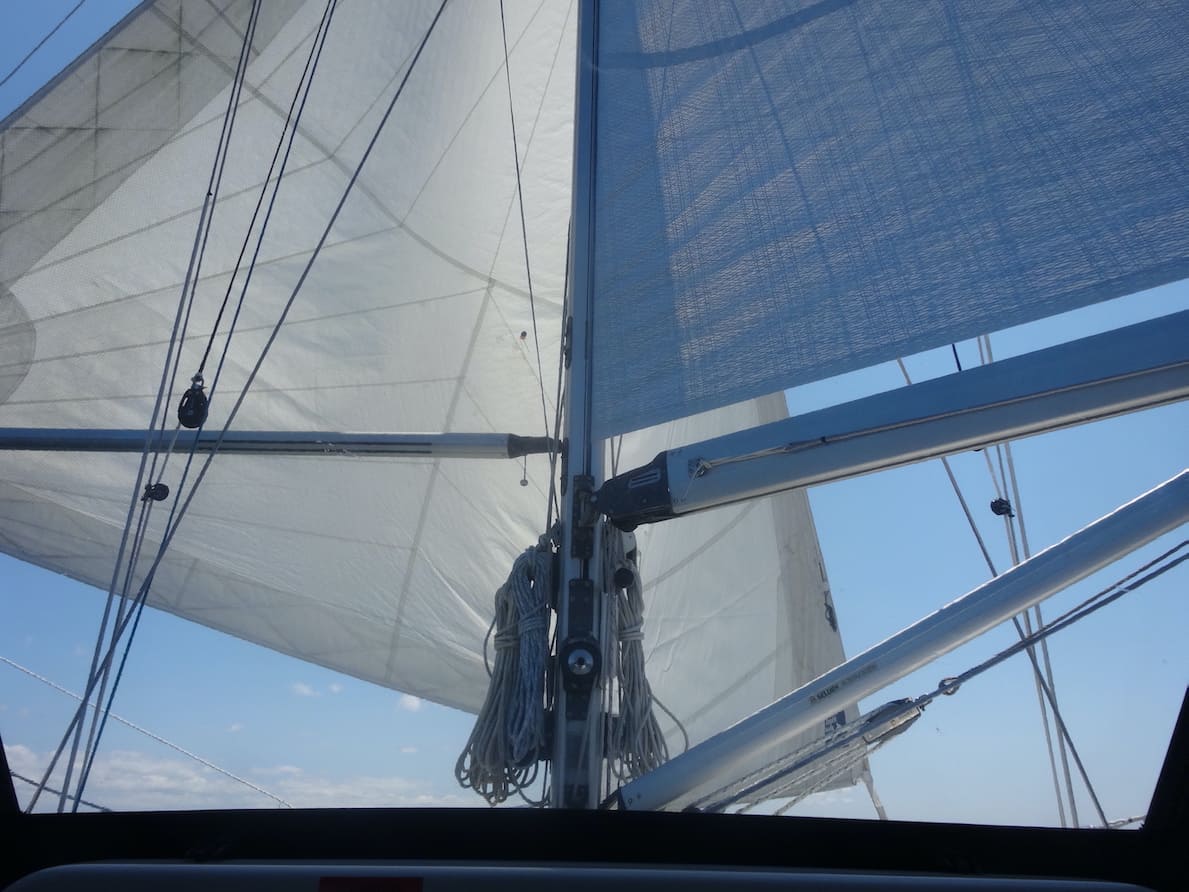
We only stopped at Camarinas overnight as we wanted to get to the Rias Baixas (the lower rias) south of Cape Finisterre.
Cape Finisterre literally translates to ‘end of the earth’ and it is a rocky headland jutting out towards the Atlantic. It is notorious for rough seas and hazardous conditions, being the cause of many shipwrecks. Neptune smiled upon us again and we were blessed with excellent conditions. Blue skies, calm seas and a good sailing wind. Before we knew it, we had rounded the peninsula and entered Ria de Corcubion.
This was our first taste of Ria life and we were able to dinghy ashore and meander through the narrow, cobbled streets of the picturesque fishing village of Corcubion.
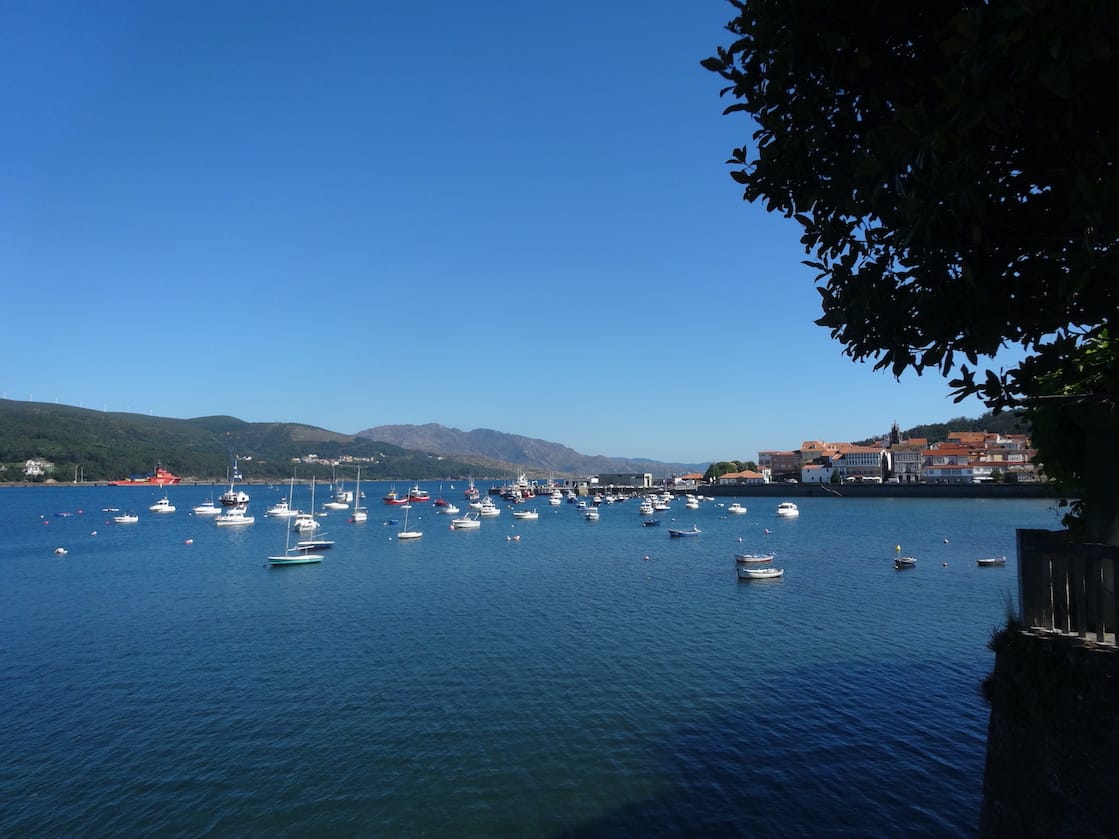
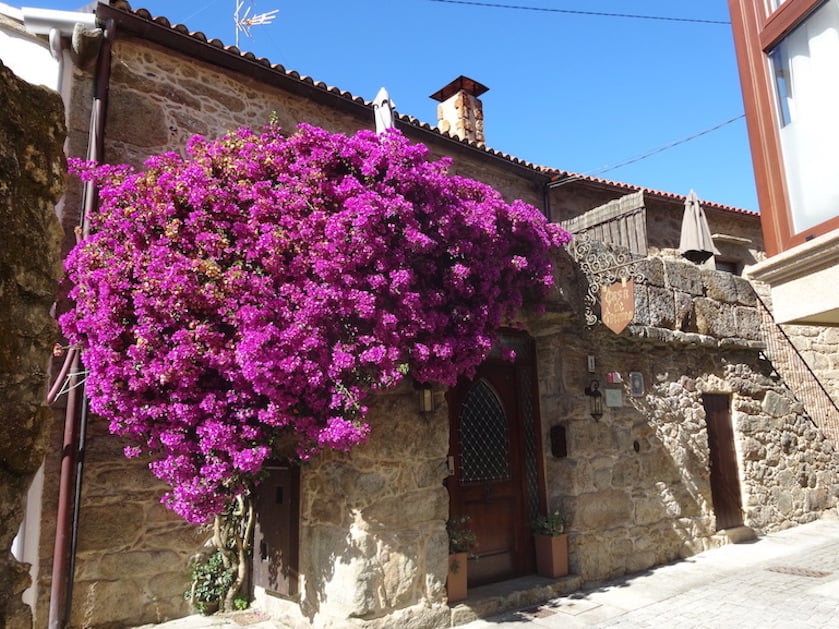
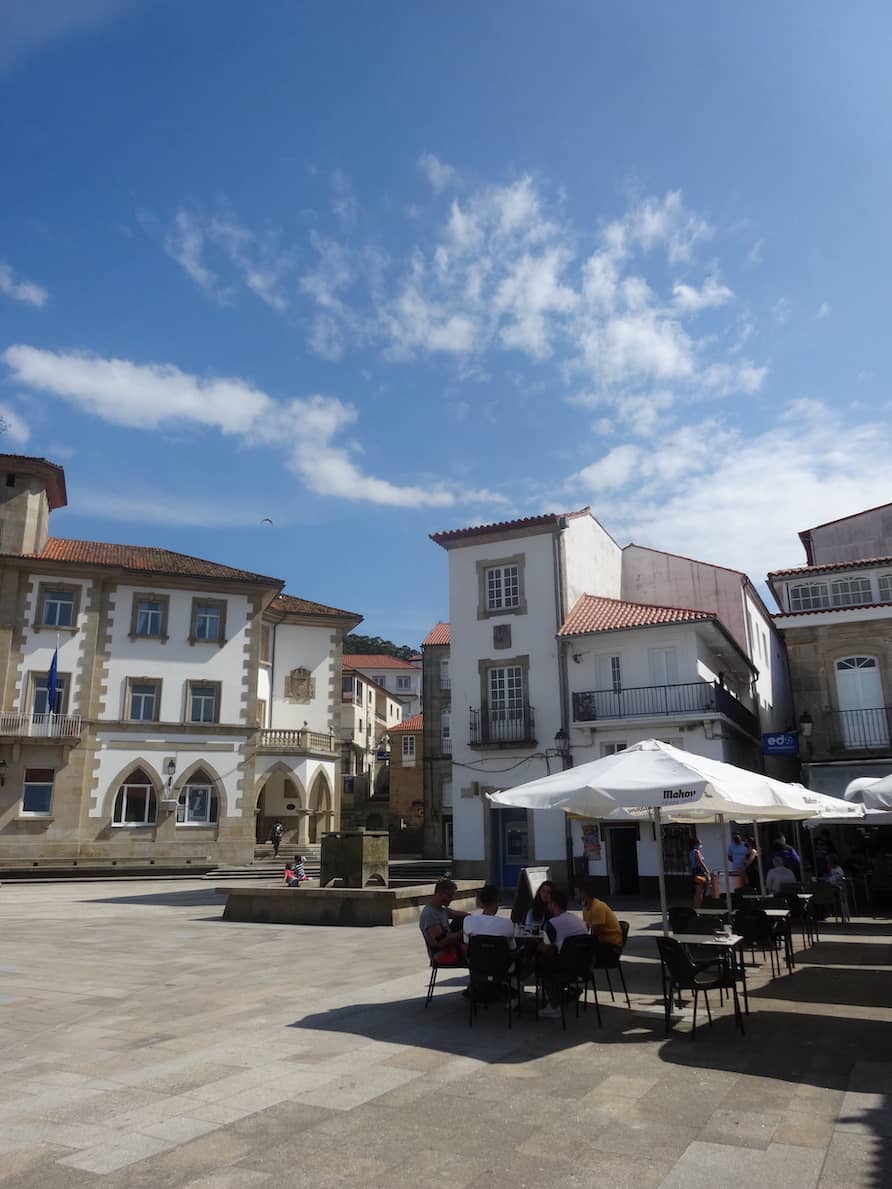
After a couple of nights at Corcubion, it was short hop of about 30nm around to the next ria and the town of Muros. in Ria de Muros e Noia.
Muros is a little larger than Camarinas and Corcubión, more of a small town than a village. However, it still retains its village feel, with its harbour, town plaza and beautiful buildings. We anchored off a small beach and took dinghy ashore to explore.
After a short time spent provisioning at the local shops, we joined the residents for an early evening beer in the square….well it would be rude not too!
Galicia is renowned for its sea food and every bar and restaurant serves a wide variety of freshly caught fish and shellfish. There is evidence of fishing for the local delicacies everywhere, from the many small fishing boats to the small mooring buoys marking the lobster pots offshore and the many ‘viveros’ in the Rias.
These viveros are large wooden platforms from which long ropes are suspended for the mussels to grow on. The platforms are anchored in the fast flow waters of the Rias which are perfect for growing mussels.
Early in the morning, while most of Spain is still asleep, the mussel boats arrive and, with large digger like shovels, collect thousands of mussels to transport to the local quaysides.
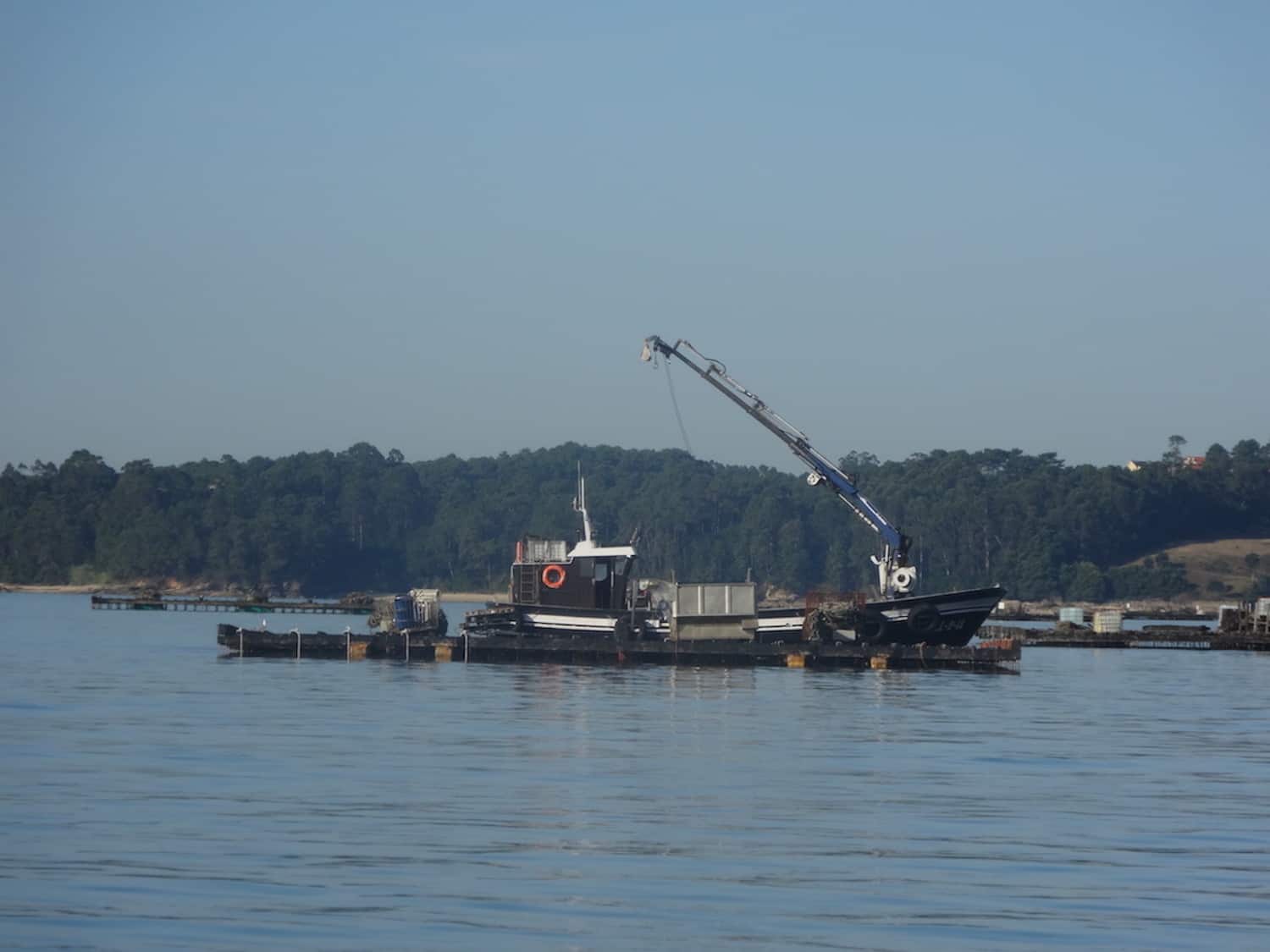
nice pictures !
We will be in Las Palmas October 5th. – See YOU !!
Thanks! It was a beautiful place to visit.
I see that you are still in the Med. Hope things are good with you.
Safe trip to Canaries. We should be there mid October.
Looking forward to catching up with you and sharing stories of adventures!!
You’re still showing a moored off shore at A Costa.
Waste of time trying to spy on you both 🤣😂🤣
Great description as always, should’ve had camera ready for Martin falling though
Hi,
Not sure what is happening with tracker – it seems a little inconsistent. Not sure which one you use, but we track others on Boat Watch or Ship Info. At the moment, Ship Info is showing Escapade in the right place.
See you next week xx
Looks like lovely sunny weather. Pretty little seaside towns. Hope you had a bowl of mussels! Are you tempted to sleep ashore sometimes?
Fisterra is the end of the Camino de Santiago across Spain. Many choose to keep walking after reaching the church at Santiago and continue to the sea at Fisterra. My sister-in-law did this. You weren’t tempted to stand on the spot? You sailed not walked but an epic journey nevertheless!
Hi,
We had a lovely time in the Rias. It was very traditional, but pretty. We do see places to stay, but having the boat means we have our accommodation with us. I think if we were visiting further inland, that would be different.
I actually don’t like mussels, but Martin had some. Also tried octopus and razor clams!
I had read about the ‘pilgrimage’ trails around that area. It would have been good to do some, but as we left UK quite late, we were struggling for time. Maybe next time.
Hope all is easing with you. x